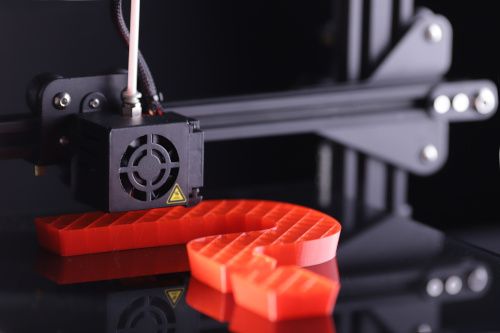Since the first patent for additive manufacturing (more commonly known as 3D printing) was filed in 1980, the industry has expanded rapidly. As with any new technology experiencing accelerated growth, unforeseen problems spur innovation.
In San Antonio, TX, an all-women team of Alamo Heights High School students realized one of the problems facing manufacturers of 3D printers was the procurement of raw materials available to make filament. After collaborative deliberation, the group founded FYDER Filament—a company poised to revolutionize sustainable materials sourcing in the 3D printing market.
We developed the idea for FYDER Filament while participating in INCubatoredu, a full-year entrepreneurship program offered at our school to empower young business leaders to identify an opportunity, develop solutions, and create an actual business. At the end of the course, each team competes for funding to grow their business.
Out of 36 submissions, five teams, including FYDER, were invited to compete in the national pitch competition hosted by Uncharted Learning. This year, the competition was held virtually, and two teams walked away with $10,000. One of the teams, was FYDER Filament.
Yes, we won! We were shocked, honored, and humbled. Now, the real work begins!
(Watch a recording of our pitch here, and our promo video here.)
FYDER: From landfill to filament
As environmentally conscious members of the community, we decided to tackle a problem close to home. Jamie, the CEO of FYDER Filament, works for her parents, who are in the oatmeal manufacturing business. Over the summer, she discovered her parents had a massive waste stream of super sacks.
Super sacks are polypropylene plastic woven bulk bags resulting in 500 million pounds of waste in America’s landfills, annually. In a month, Jamie’s parents’ business produces over 4,000 pounds of refuse. A stark one percent of polypropylene plastic is recycled every year while the rest heads to landfills.
We were determined to create a 3D printing filament entirely made of plastic waste. We extended the life of the plastic packing sacks discarded during manufacturing by turning them into spools of filament to be used to design and develop new innovations via 3D printing.
Weaving a network
Eager to begin, we discovered a San Antonio-based makerspace, 10BitWorks, which put us in contact with The DoSeum, a local children’s museum that previously donated a machine to melt raw plastic material into printing filament.
Aided by the generosity of the museum, we started to develop prototypes using the oatmeal bags. We successfully found a way to recycle polypropylene into 3D printer filament. Our process will not only reduce waste but is a new, sustainable material alternative to the ever-growing 3D printing market.
Once we nailed down our process and formula, we solidified a deal with a national 3D printing company which included an online retail space to sell our product. Over the summer we will file for a provisional patent and have a goal to bring the filament to the market by the end of 2021. We are ambitious to sell at the national level by 2022.
The support and mentorship from local businesses were essential to creating FYDER. There is a vast community of experienced professionals who are very generous with their time and eager to help young entrepreneurs.
Staying connected
Attending high school during the pandemic forced our team to think creatively about how and when we communicate. Due to COVID, we started the year out virtually, and it wasn’t until September where we could actually be in a classroom together to collaborate, in person. Many teams experienced movement back and forth virtually due to COVID throughout the year. For members of our team, the change of pace offered by online learning had advantages.
The best aspect of virtual learning was being able to work from the comfort of our own homes. We were able to and dig in without distractions, but always appreciated the importance of being able to be in-person to physically work on our prototype as a group. It was a great learning experience, and we learned how to balance virtual communication, individual work time, meetings, and in-person commitments—a challenge not many high school students get the chance to experience and learn from.
Today, we hold regular meetings on FaceTime and Google Meet. The support of our teachers and mentors has allowed us to embrace the collaborative and experiential nature of the program, and overcome the hurdles presented by COVID-19. Our team is dedicated to keeping each other accountable as our company continues to grow.
Four career paths, one program
With significant funding in-hand, we will be able to work to finalize our LLC, file our provisional patent, and formalize the manufacturing process to ensure consistency in the filament and the best quality product. Once we have completed these next areas of focus, we will be ready to launch and sell our product nationwide.
Of the founders of FYDER, only our CEO Jamie has traditional business aspirations. She plans on pursuing a career embracing her two passions: business and architecture. Timandra hopes to continue to innovate as a biochemical engineer, and Alix will use her newly developed public speaking skills as an English teacher. Olivia envisions a long-term career in television production.
The skills we gained as part of this program will help us immensely. Collaboratively, we learned to become better problem solvers and gained confidence and experience preparing us for both college and our dream jobs.
- High school students say AI will change the workforce - April 18, 2024
- Motivating students using the Self-Determination Theory - April 17, 2024
- Michigan Virtual’s statewide workgroup releasing AI guidance for K-12 educators - April 17, 2024


